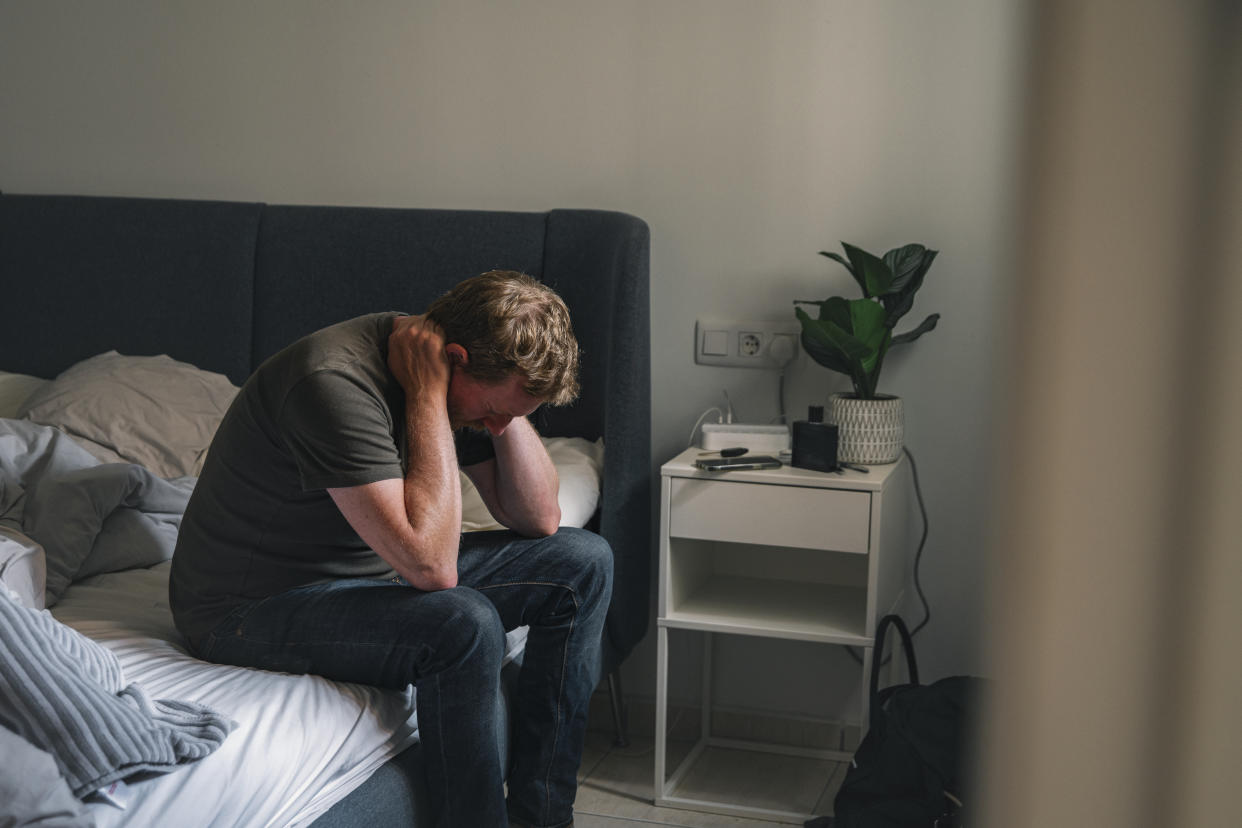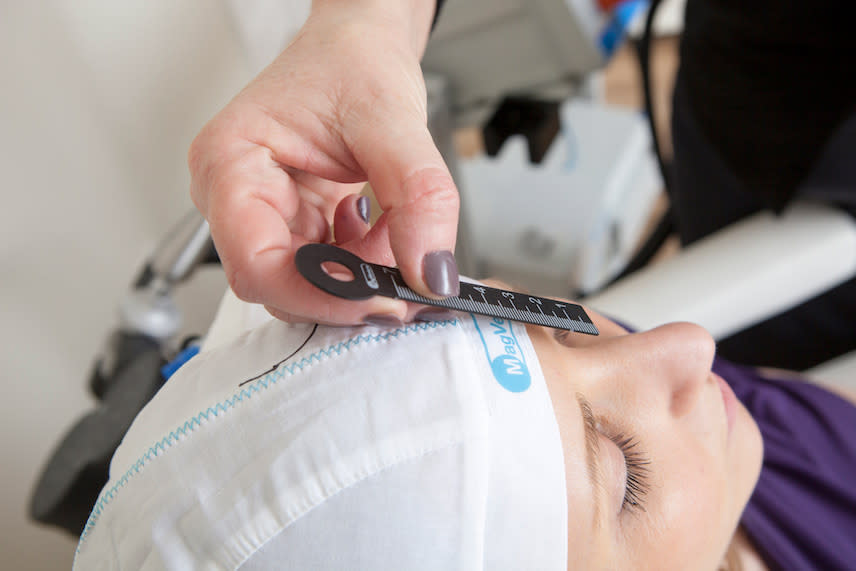How electromagnetic therapy helped Mel B 'rewire' her brain

Spice Girls star Melanie Brown - better known as Mel B - has revealed she underwent a type of brain therapy to help her fight suicidal thoughts during a dark period of her life.
The singer, 48, wrote in an updated version of her autobiography, Brutally Honest, that she went to a private clinic in the Balearic Islands last year to undergo the non-invasive treatment for six weeks.
Brown said she turned to the therapy after a legal battle with her ex-husband Stephen Belafonte over custody of their daughter, Madison, 12. The pop star claimed she suffered from physical, emotional and financial abuse during her 10-year marriage to Belafonte, who she divorced in 2017.
The procedure is called repetitive transcranial magnetic stimulation (rTMS) and uses a powerful electromagnetic coil that is held against the scalp in order to create electric current in specific areas of the brain.
It is usually considered for patients with depression who have not responded to antidepressants, or for whom antidepressants are not suitable.
According to the National Institute for Health and Care Excellence (NICE), the evidence of rTMS shows "no major safety concerns" and that there is "adequate" evidence of its efficacy in the short-term.

Nice adds that rTMS "for depression may be used with normal arrangements for clinical governance and audit".
How does rTMS work?
According to The London Psychiatry Centre, which became the first clinic in the UK to offer rTMS in 2012, the treatment works by using magnetic stimulation to stimulate areas of the brain that regulate mood.
It is non-invasive, as it doesn’t involve any injections or medications, and patients do not have to undergo anaesthesia to receive the treatment.
Dr Andy Zamar, founder of The London Psychiatry Centre and expert on treatment for resistant depression, tells Yahoo UK that the treatment works by increasing blood flow and oxygen utilisation in specific targeted areas of the brain.
"This in turn stimulates the growth and repair of the nerve cells, a process called 'neuroplasticity' - a term derived from the Greek words [for] nerve creation. This induces healing and should prevent brain atrophy which occurs with depression in the long term."
Treatment sessions last for around 30 minutes, and are usually done on a daily basis, five days a week for four to six weeks.
What happens during treatment?
During a session, patients will typically be asked to sit in a chair with their head leaning back, with a pillow placed around their neck to support their head.
They will be required to wear a cotton cap, which helps ensure the electromagnetic coil can be positioned correctly on the left or right side of the head.

During her experience, Brown described a similar procedure when she attended a facility in "a remote part of an island in the Balearics".
She wrote that the man administering her treatment "gently pulls a metal contraption - containing an intricate electromagnetic coil shaped into a figure of eight - and places it on the right side of my skull".
"A series of magnetic pulses shoots into my brain. 15 minutes pass. The coils move to the left side. Bang, bang, bang. This time it hurts. I close my eyes. Surrender…
"Somewhere deep inside this head of mine, an electric current generated by a hi-tech transcranial magnetic stimulation machine is renewing, rewiring and shocking thousands of neurons battered by years of extreme trauma, by depression I couldn’t admit to and anger I couldn’t shake," she continued.
Brown said the treatment helped her find "some peace and the sleep that has eluded me for years".
Who can go for rTMS treatment?
Nice and the NHS has recognised rTMS as a treatment for people who suffer from severe depression or anxiety, which has not responded to anti-depressants or psychological therapy.
Patients must be referred by their psychiatrist for rTMS treatment. The NHS does not offer the treatment for other psychological conditions.
Dr Zamar tells Yahoo UK that rTMS is suitable for all forms of depression - however, he warns that "some protocols may worsen the outcomes in some forms of depression".
Pointing to a recent study that found a full recovery (remission) rate of just one in five patients in a group of 255 patients, with 17 "severe adverse events", Dr Zamar says he believes the patients' conditions "were not suited to the protocol used".
"Our peer reviewed published remission rates are in the region of six to seven out of 10 and we only had three hospitalisations in 12 years due to inability to take patients off antidepressants, which worsen the form of depression which these patients suffered from, namely making them very agitated," he says.
Dr Zamar adds that he believes rTMS should be made more available to patients in the UK. "The whole purpose of our clinic introducing it in the UK in 2012 and communicating with Nice in 2014 was to make it available to everyone. It is harmless when used appropriately, and very effective."
Read more about mental health:
How smiling can positively influence the way we think (Yahoo Life UK, 4-min read)
What is ‘loud budgeting’ and why is it good for our mental health? (Yahoo Life UK, 5-min read)
Could decluttering your digital life admin improve your mental health? (Yahoo Life UK, 4-min read)


